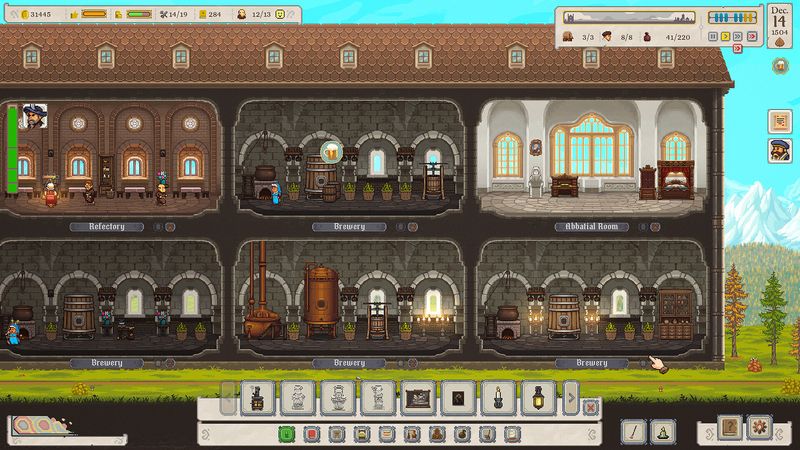I dove headfirst into Ale Abbey – Monastery Brewery Tycoon, and I must admit, I was both intrigued and challenged by its intricate design. I have a passion for collecting every detail and exploring every nook and cranny in every game I play. This title by Hammer & Ravens, published by Shiro Unlimited, offers a mix of simulation and tycoon mechanics that is refreshing yet somewhat unforgiving. In this review, I will cover every aspect that matters to a completist like me.
Overall Impression
Ale Abbey stands out by offering a genuine simulation of brewing and monastery management. I appreciate a game that celebrates experimentation. The recipe system is unmatched in this genre. There is no pre-made blueprint for success; you must create your own combinations. Every brew is a chance to discover a unique trait. For example, I encountered a honey herbal ale that unlocked a Bribery trait—a quirky mechanic that adds depth to the gameplay.
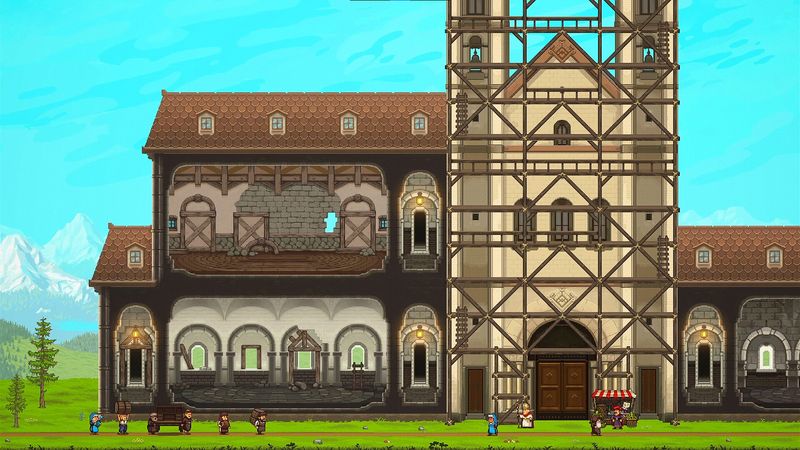
Despite its inventive recipe system, Ale Abbey is not without its pitfalls. The game struggles with a few frustrating design choices. For instance, remodeling the monastery requires you to dismantle entire rooms at once. I found this approach punitive since a single misstep early on forces you into financial hardship later. I would suggest an option like a “blank room” mode to correct mistakes without heavy penalties. It is details like these that puzzle seasoned players and completionists alike. Still, I believe the active community on Discord and the dedication of the developers will lead to improvements in future patches.
Gameplay Mechanics
The gameplay mechanics are both genuine and layered. I enjoy the tight core loop of brewing, sipping, and repeating, but I must highlight the steep learning curve. Brewing is simple in outline but complex in practice. The game teaches you the basics of beer types—from Old Ale to Amber Ale—while challenging you to explore additional mechanics such as aging. Only brews of five or more strength can be aged, a nuance that the game does not adequately explain. I recall having to consult the community on Discord to understand this mechanic fully. This level of complexity appeals to enthusiasts who wish to dive deep, but it may deter casual players at times.
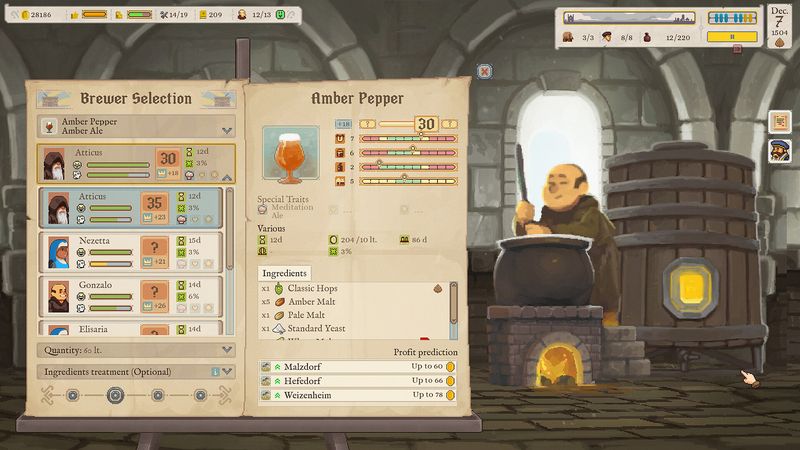
An additional point of contention lies with the scaling of brewing capacities. Upgrading from a 100-liter setup to 300 liters introduces a challenging twist. I learned, sometimes the hard way, that combining batches is not allowed. The game demands you meet exact order sizes, which forces you to plan upgrades carefully. I once reached a game over because I invested in a brewing stove upgrade without matching it with the necessary Fermentation Barrel capacity. This mistake, while frustrating, highlights the game’s commitment to a realistic economic simulation in a monastery setting.
Story and Characters
The narrative in Ale Abbey may not be as overt as in a story-driven adventure, but it exudes a subtle charm and distinct ambiance. The game builds its world slowly, immersing you in the unique life of a monastery brewery. Though there is no central epic narrative, the daily decision-making and brewing challenges create an engaging microcosm of monastic life. I treasure the small moments in which I, as the player, decide the fate of my brews. The interactions with non-player characters add flavor, especially as I manage the temperamental fermentines. Their occasional comical gripes about the ale’s quality or the monastery’s upkeep add charm and realism.
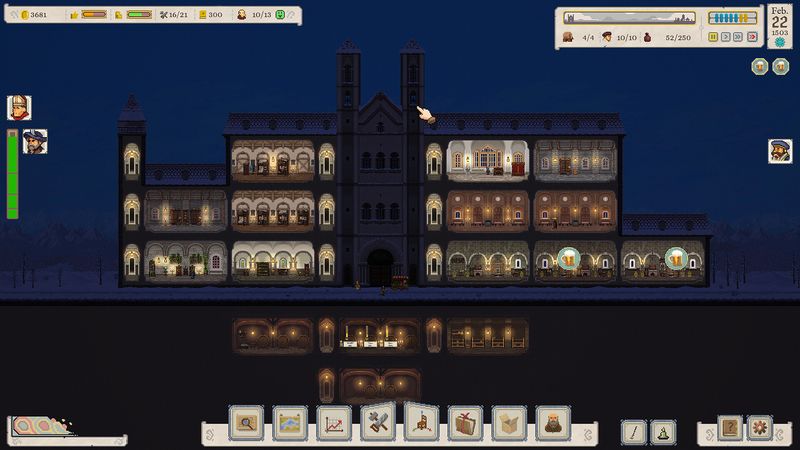
Visuals and Graphics
Visuals in Ale Abbey support its overall theme admirably. The art style is pleasingly cute and carefully crafted. I found that each room in the monastery feels immersive, despite some limitations in remodeling options. The graphics are neither overly detailed nor minimalistic—they strike a balance that supports the game’s laid-back atmosphere. While not a visual masterpiece on the level of AAA titles, the game delivers enough aesthetic pleasure to keep your eyes well engaged through long hours of brewing and management.
Sound and Music
The sound design is another highlight that strengthens the game’s ambiance. The ambient background music, replete with gentle Gregorian chants, captures the essence of a monastic retreat perfectly. The old-style soundtrack does more than set a mood—it educates the listener subtly about the historical context of monastic brewing traditions. Moreover, the sound effects, from the bubbling of fermentation barrels to the subtle clinks of glassware, enhance the tactile feel of the brewing process. This auditory detail not only complements the visuals but also enriches the overall player experience.
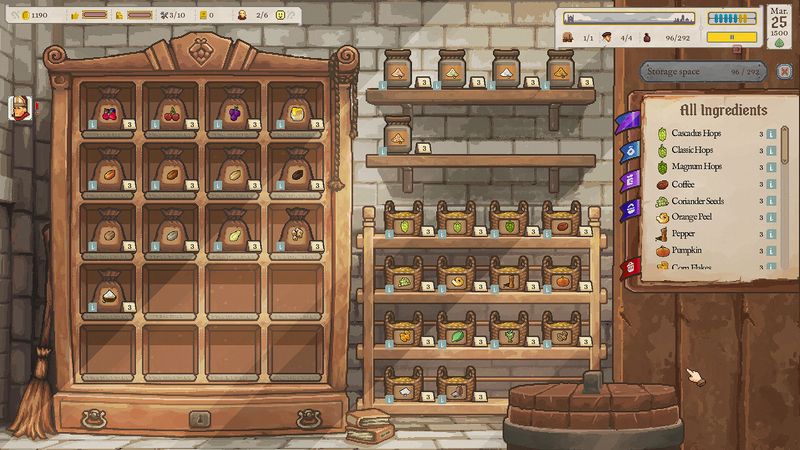
Difficulty and Replayability
I found the difficulty level of Ale Abbey appropriate but demanding for completionists. There is a consistent challenge in managing resources, planning upgrades, and perfecting brewing recipes. While certain design choices can lead to abrupt setbacks, such as the remodeling constraints and the strict brewing capacity limits, these mechanics encourage careful planning. The game rewards forward-thinking and meticulousness—traits that I value as a CompletionistMaster. I commend the developers’ commitment to an experience that does not simply cater to quick progress but requires strategic planning and thorough exploration of all mechanics.
Replayability is another strong point. Even though the game is still in Early Access, its complexity offers plenty of room for experimentation. I have already mapped out several strategies for diverse brewing recipes and room configurations. Playing on deck even offers minor interface challenges, though those are likely to be refined as the game evolves. Each playthrough is punctuated by both small victories and instructive setbacks. The game invites the player to keep coming back, refining techniques and unlocking every unique beer trait. I find that the need to build, tweak, and perfect every element of the monastery design makes each session a worthwhile experience.
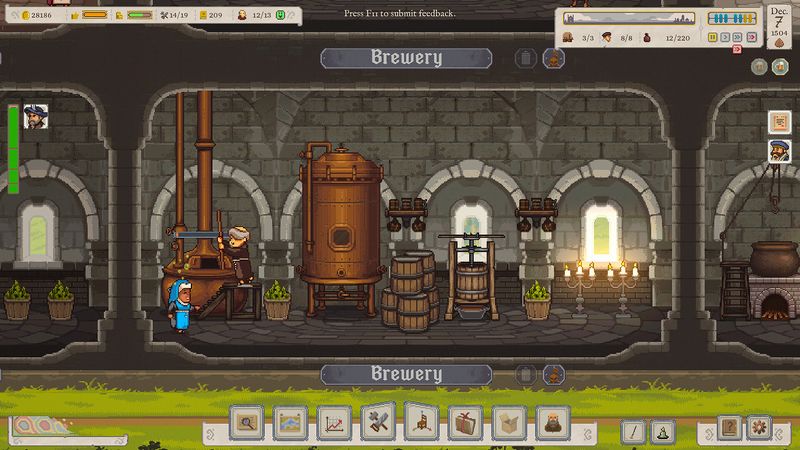
Final Thoughts
Beyond the in-game mechanics, I remain deeply impressed by the community engagement seen on the developers’ Discord channel. Hammer & Ravens are in constant dialogue with their players, addressing concerns and sharing insights behind brewing mechanics and design philosophies. This level of transparency and responsiveness holds promise for the game’s future updates. I anticipate that many of the critiques I encountered will be smoothed out in upcoming patches, making Ale Abbey an even more rewarding endeavor.
Comparing Ale Abbey to other simulation games in the tycoon genre, I believe it offers a distinct perspective. Many games in this space lean heavily on streamlined mechanics or focus solely on resource management. Here, I found myself immersed in experimental brewing with a nod to historical and cultural context. It is clear that Hammer & Ravens have attempted to blend simulation with a form of creative alchemy. This effort sets the game apart from its peers.
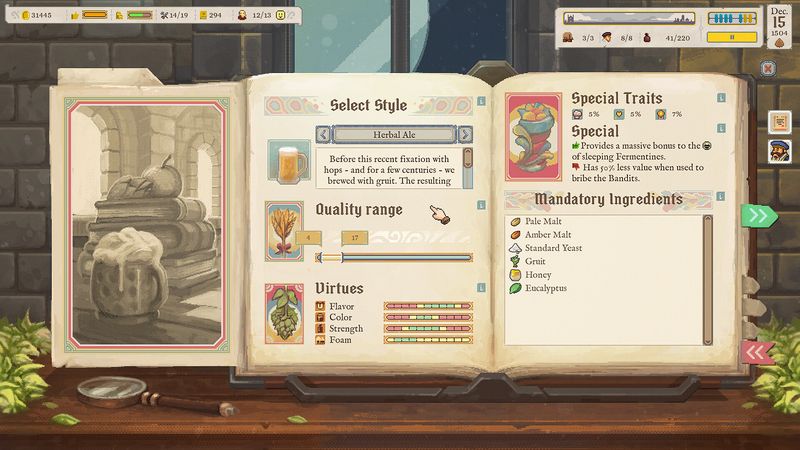
Conclusion
In conclusion, my journey through Ale Abbey – Monastery Brewery Tycoon has been a rich and absorbing experience. The game’s unique approach to brewing, combined with its detailed simulation of monastic life, provides endless opportunities for exploration and refinement. Its audio and visual components work in unison to evoke an authentic ambiance. However, certain design flaws—especially around remodeling and scaling brewing capacities—detract from the overall fluidity of the experience. Despite these shortcomings, I wholeheartedly recommend Ale Abbey to those who enjoy deep, methodical gameplay with a creative twist.
After weighing all these elements, I give Ale Abbey a solid 3.5 out of 5 stars. There remains room for refinement, yet the game shows promise and offers a unique take on the simulation genre. For a completionist like me, the challenge and attention to detail make this a title worth monitoring as it evolves. I look forward to revisiting the Abbey with fresh insights and strategies once the developers address the early design hiccups. Cheers to more fruitful, and possibly divine, brewing adventures ahead.
